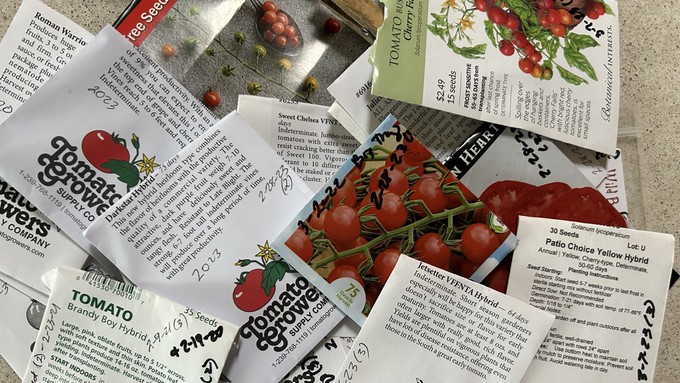
Placer County master gardeners host free in-person workshop

Hmm, there's bound to be seeds to swap in this collection. Learn about seed saving and sharing during a Placer County master gardener-led workshop Jan. 13. Kathy Morrison
What does a gardener do on a cold, damp January day? It’s a good time to sort seeds (before ordering new packets).
You also may want to swap some extra seeds with gardening friends – or get ready to save seeds for future growing seasons.
Learn all about saving and sharing seeds during an upcoming free workshop. Hosted by the UCCE master gardeners of Placer County, “Seed Saving Flowers and Vegetables” will be held at 10:30 a.m. Saturday, Jan. 13, at the Loomis Library. No advance registration is necessary.
“Did you know that National Seed Swap Day is January 27, 2024?” say the organizers. “Honor the great U.S. tradition of swapping seeds with neighbors and sharing warmth with your community. You will learn the basics rules for seed saving, germination requirements by species, how to grow plants identical to the parent plant and how to preserve heirlooms.”
Not only will you be saving seeds, but saving money, too: Growing vegetables and flowers from seed costs a fraction of buying transplants. The one-hour class will cover all the basics to get you started.
Loomis Library is located at 6050 Library Drive in Loomis.
Details and directions: https://pcmg.ucanr.edu/.
Comments
0 comments have been posted.Sacramento Digs Gardening to your inbox.
Sites We Like
Garden Checklist for week of July 21
Your garden needs you!
* Keep your vegetable garden watered, mulched and weeded. Water before 8 a.m. to reduce the chance of fungal infection and to conserve moisture.
* Feed vegetable plants bone meal, rock phosphate or other fertilizers high in phosphate to stimulate more blooms and fruiting. (But wait until daily high temperatures drop out of the 100s.)
* Don’t let tomatoes wilt or dry out completely. Give tomatoes a deep watering two to three times a week.
* Harvest vegetables promptly to encourage plants to produce more. Squash especially tends to grow rapidly in hot weather. Keep an eye on zucchini.
* Pinch back chrysanthemums for bushy plants and more flowers in September.
* Remove spent flowers from roses, daylilies and other bloomers as they finish flowering.
* Pinch off blooms from basil so the plant will grow more leaves.
* Cut back lavender after flowering to promote a second bloom.
* It's not too late to add a splash of color. Plant petunias, snapdragons, zinnias and marigolds.
* From seed, plant corn, pumpkins, radishes, winter squash and sunflowers.